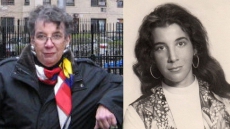Behind every 'successful' tourism entrepreneur, there are many unsuccessful years and countless sleepless nights.
The University of Surrey research into innovative entrepreneurs starting to work in tourism has found, in some of the first analysis undertaken, how they have to use initiative and hard work and often work for nothing to overcome the barriers in setting up their innovation.
The researchers, who included University of Surrey's Isabel Rodriguez and Allan Williams, described the research as vital because the innovation by entrepreneurs who are "new to tourism" is poorly understood.
Rodriguez said: "We were really interested in this essential area of research as we wanted to show that the innovation process in services, especially by new to tourism entrepreneurs, is a complex and experimental one," adding, "The tourism entrepreneurs face many challenges and successfully overcame them by being highly dynamic and market-driven. We wanted to highlight how they succeeded doing this in an uncertain process."
Entrepreneurs use creative strategies to overcome these challenges and succeed despite their lack of financial and human resources. To keep afloat they can save money by running the business from home, "share" employees with other companies, offer a share of the business in return for specialist advice, as business owners work for less than market rates.

Another of entrepreneurs' key strategies to overcome the lack of resources was building ties and networks with different stakeholders, to ensure that the innovations are successfully developed and implemented.
The research revealed some of the obstacles the entrepreneurs had to overcome. These included some areas of the tourism industry being behind the times when it came to using technology, which empowered the entrepreneur to apply technological knowledge to attract customers.
Another issue for the entrepreneurs, who often had little or no relevant background in tourism, included getting the customer to adopt new technology that the industry was not familiar with, and ensuring acceptance of the innovation, for example by offering free trials. This often overcame the consumer resistance.
This might include using apps to order food in a restaurant, to decide at a ski resort whether or not to ski that day, or to obtain unused hotel parking spaces when commuting.
The entrepreneurs' other successful techniques included ensuring that the customer was an integral part of the design of the product from the early days of the innovation process, and being flexible to the customers' needs.

The research showed that entrepreneurs needed particular characteristics and approaches to succeed, including using experimenting with their approach early in the process, and working with a functionally diverse team to utilise plenty of different skills. Another successful approach included carrying out many development activities concurrently rather than in a set sequence, to overcome problems as soon as they were encountered.
Rodriguez noted: "This research sheds more light on how entrepreneurs are successfully using technology to transform the tourism sector despite any potential consumer resistance. It highlights that entrepreneurs have to work hard to get their ideas to the market - but with perseverance and hard work they will successfully introduce innovations that make an impact in the tourism sector."
The study appears in the journal Current Issues in Tourism





